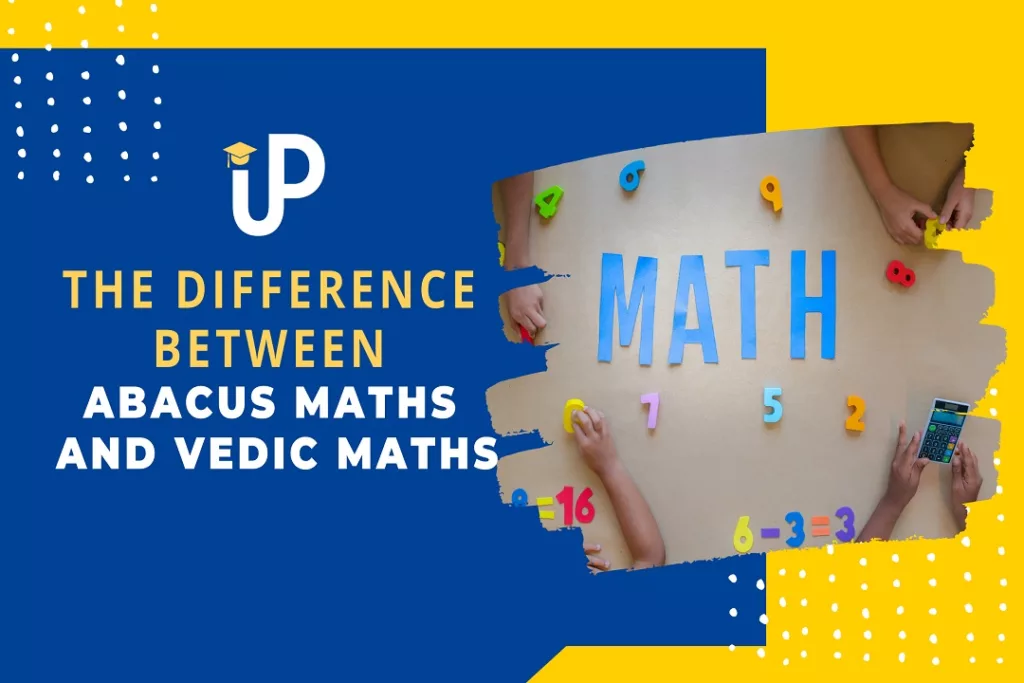Mathematics has been a vital part of human civilization for centuries. Over time, various mathematical systems and techniques have been developed to solve mathematical problems. Two such systems are Abacus maths and Vedic maths. Although both are ancient methods, their methodology, approach, and cultural background differ.
Abacus Maths
Abacus maths is an ancient Chinese method that has been around for thousands of years. It is primarily used for basic arithmetic operations such as addition, subtraction, multiplication, and division. Abacus maths involves the physical manipulation of beads or balls to perform mathematical calculations. It is a tactile method of learning that helps children understand mathematical concepts visually.
The use of physical tools such as the abacus can help students understand mathematical concepts visually and build a strong foundation in arithmetic. Moreover, the focus on speed can help improve students’ mental agility and quicken their calculation abilities.
Vedic Maths
On the other hand, Vedic maths is a set of mathematical techniques that originated in ancient India. It is based on sixteen sutras, which are essentially formulae that help solve complex mathematical problems. Vedic maths can be used to solve a wide range of mathematical problems, including algebra, geometry, trigonometry, and calculus. The focus of Vedic maths is on understanding over speed.
The sixteen sutras that form the basis of Vedic maths are designed to help students understand the underlying principles of mathematics. This approach encourages students to think critically and creatively and to develop problem-solving skills that can be applied to a wide range of mathematical problems. Vedic maths is primarily taught using textbooks and written materials, and it requires a certain level of mathematical aptitude and the ability to think.
The benefits of Vedic maths are numerous. The focus on understanding helps students develop a strong conceptual foundation in mathematics, which is essential for advanced problem-solving. Moreover, the mental calculation techniques taught in Vedic maths can be used to perform calculations quickly and accurately without the need for pen and paper, making it a practical method for real-world applications.
Here are some key differences between Abacus Maths and Vedic Maths:
- Methodology: The methodology used in Abacus maths and Vedic maths is quite different. Abacus maths involves using a physical tool, the abacus, to perform arithmetic operations. On the other hand, Vedic maths relies on mental calculation techniques that do not require any physical tool.
- Applicability: Abacus maths is primarily used for basic arithmetic operations, such as addition, subtraction, multiplication, and division. In contrast, Vedic maths can be applied to solve a wide range of mathematical problems, including algebra, geometry, calculus, and trigonometry.
- Emphasis (speed vs. understanding): The emphasis in Abacus maths is on speed and accuracy, as students are trained to perform calculations quickly using the abacus. In contrast, the emphasis in Vedic maths is on understanding and problem-solving skills, as students are taught mental calculation techniques that help them approach mathematical problems logically and systematically.
- Tools used (physical vs. mental): Abacus maths relies on the physical tool, the abacus, initially. Students learn to manipulate the beads on the abacus to perform arithmetic operations. Eventually, with practice, the kids are able to visualise the abacus in their mind and do calculations mentally. In contrast, Vedic maths relies solely on mental calculation techniques. Students learn to perform calculations mentally using certain tricks and techniques, without relying on any physical tool.
- Cultural Background: Another significant difference between Abacus maths and Vedic maths is their cultural background. Abacus maths is primarily used in East Asian countries such as China, Japan, and Korea, while Vedic maths is rooted in Indian culture and is primarily used in South Asian countries such as India, Bangladesh, and Pakistan, among others.
This cultural background is reflected in the different teaching methodologies used in Abacus maths and Vedic maths. Abacus maths is primarily focused on speed and physical manipulation, while Vedic maths emphasizes understanding and mental calculations. Additionally, the cultural background of these methods influences the way they are perceived and taught in different parts of the world.
- Ease of Learning: The ease of learning Abacus maths and Vedic maths can also differ based on the individual student’s learning style and mathematical aptitude. Abacus maths can be easy to learn for some students, especially those who are visual learners. However, it may be challenging for students who struggle with rote memorization or have difficulty understanding the underlying mathematical concepts.
Vedic maths can also be challenging to learn, especially for students who are not accustomed to mental calculations. However, once students learn the techniques of Vedic maths, they can easily perform complex mathematical calculations in their heads. Moreover, the techniques taught in Vedic maths can help students approach mathematical problems more logically and systematically, which can be beneficial in other areas of study and real-world applications.
Conclusion
In conclusion, Abacus maths and Vedic maths are two ancient methods of mathematical calculation that differ in their methodology, approach, and cultural background. Abacus maths is a tactile method of learning that emphasizes speed and accuracy, while Vedic maths is a mental method that emphasizes understanding and problem-solving skills. The applicability of Abacus maths is primarily pertaining to basic arithmetic operations, while Vedic maths can be applied to a wide range of mathematical problems. The cultural background of these methods influences the way they are taught and perceived in different parts of the world. Ultimately, the choice between Abacus maths and Vedic maths depends on the individual student’s age and the desired application of the learned skills.

